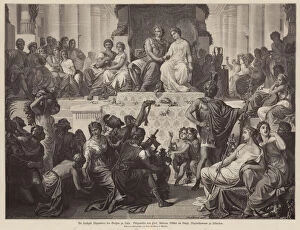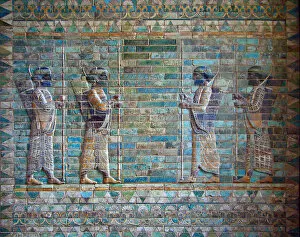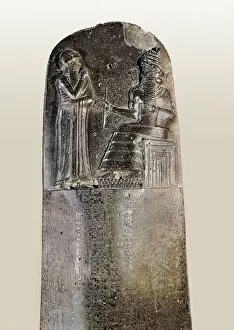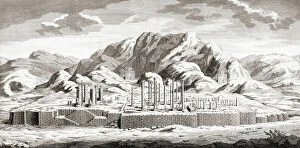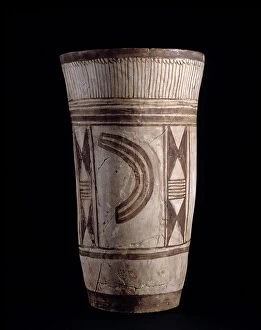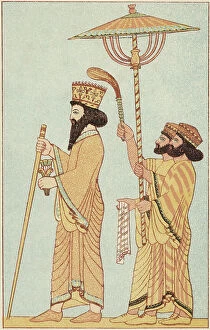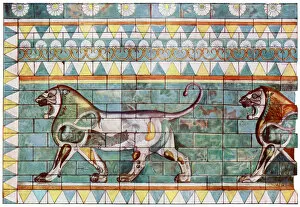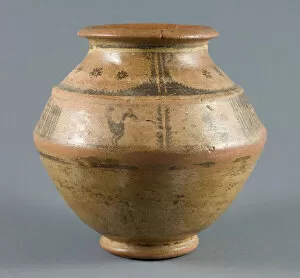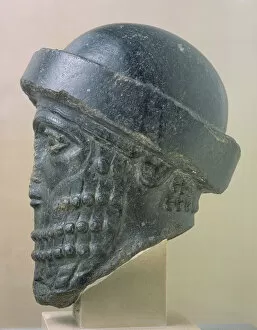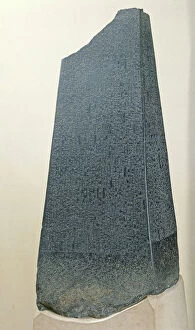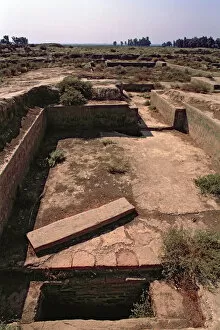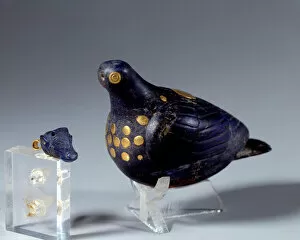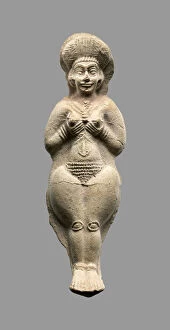Susa Collection
Susa is an ancient city located in the Khuzestan province of Iran and has been inhabited since at least 4,200 BC...
Choose a picture from our Susa Collection for your Wall Art and Photo Gifts
154 items
All Professionally Made to Order for Quick Shipping
-
Susa Collection
Susa is an ancient city located in the Khuzestan province of Iran and has been inhabited since at least 4,200 BC and was once the capital of the Elamite Empire. One of Iran's most important archaeological sites and contains a wealth of artifacts from various periods in history. The city was also home to several important religious sites, including a temple dedicated to Inshushinak, the god of Susa. The city is known for its impressive ziggurat, which dates back to around 2200 BC and stands nearly 70 feet tall. Today, Susa remains a popular tourist destination due to its rich cultural heritage and archaeological significance. Visitors can explore the ruins of palaces and temples as well as visit museums that house artifacts from various periods in history.
+
Our beautiful pictures are available as Framed Prints, Photos, Wall Art and Photo Gifts
The Susa collection, available on Media Storehouse, showcases the rich cultural heritage of Iran's Asia region. Our collection features a range of wall art options including framed prints, photo prints, canvas prints and jigsaw puzzles. Additionally, greeting cards featuring images from the Susa collection are also available for purchase. Susa is an ancient city located in southwestern Iran that has been inhabited since prehistoric times. It was once one of the most important cities in the Persian Empire and served as its capital during certain periods. The city is home to numerous archaeological sites and monuments that have been well-preserved over time. The Susa collection offers a glimpse into this fascinating history through stunning photographs capturing the intricate details of these ancient ruins and artifacts. From towering columns to intricately carved stone reliefs, each piece tells a unique story about this remarkable civilization. Whether you're looking to add some historical depth to your home decor or simply appreciate beautiful photography, the Susa collection is sure to impress with its striking imagery and rich cultural significance.
+
What are Susa (Iran Heritage Sites Iran Asia) art prints?
Susa, also known as Shush, is an ancient city located in the Khuzestan province of Iran. It was one of the most important cities in the Elamite Empire and later became a significant center for the Persian Achaemenid Empire. Today, Susa is recognized as a UNESCO World Heritage Site due to its rich cultural heritage and historical significance. We offer art prints featuring images of Susa that showcase its unique architecture, artifacts, and landscapes. These prints are created using high-quality printing techniques that capture every detail of these stunning photographs. They are available in various sizes and formats to suit different preferences. Susa art prints from Media Storehouse provide an excellent way to bring a piece of Iranian history into your home or office space. Whether you're looking for a beautiful addition to your personal collection or searching for a thoughtful gift for someone special, these prints offer something truly unique and captivating.
+
What Susa (Iran Heritage Sites Iran Asia) art prints can I buy from Media Storehouse?
We offer a wide range of Susa art prints that capture the essence of this ancient Iranian city. You can choose from a variety of images that showcase the rich cultural heritage and architectural marvels of Susa, including stunning photographs of its historic ruins, temples, and palaces. These art prints are available in different sizes and formats to suit your preferences. Some popular options include black-and-white photographs that highlight the intricate details and textures of Susa's monuments, as well as colorful paintings that evoke the vibrant spirit and beauty of this unique destination. Whether you're looking for a statement piece to adorn your living room or a thoughtful gift for someone who loves history and culture, we have something for everyone. With high-quality printing techniques and premium materials used in every print, you can be sure that your chosen artwork will look stunning on any wall.
+
How do I buy Susa (Iran Heritage Sites Iran Asia) art prints?
To purchase Susa art prints from Media Storehouse, you can browse our extensive collection of artwork online. Once you have found the print that you would like to purchase, simply add it to your cart and proceed to checkout. During the checkout process, you will be prompted to enter your shipping information and payment details. We offer a variety of payment options including credit card and PayPal. We also offer international shipping for customers outside of the UK. Their selection of Susa art prints includes a range of sizes and styles to suit any taste or decor style. Whether you are looking for a large canvas print or a smaller framed piece, we have something for everyone. Purchasing Susa art prints from Media Storehouse is easy and convenient thanks to their user-friendly website and secure checkout process.
+
How much do Susa (Iran Heritage Sites Iran Asia) art prints cost?
We offer a wide range of Susa art prints that are available for purchase. The cost of these prints may vary depending on the size and type of print you choose. We have various options available such as framed or unframed prints, canvas prints, and poster prints. Our Susa art prints showcase the beauty and history of this ancient city in Iran. Each print is carefully crafted to capture the essence of this unique location, making it an ideal addition to any home or office space. We take pride in offering high-quality art prints at affordable prices without compromising on quality. Our collection includes a variety of sizes and styles to suit your preferences while ensuring that each piece is made with exceptional attention to detail. Our Susa art prints are priced competitively so that everyone can enjoy them without breaking the bank.
+
How will my Susa (Iran Heritage Sites Iran Asia) art prints be delivered to me?
We take great care in delivering your Susa art prints to you. We use high-quality packaging materials to ensure that your prints arrive safely and undamaged. Your prints will be carefully rolled and packaged in a sturdy tube before being shipped out to you. We work with trusted shipping partners who are experienced in handling delicate artwork. They will deliver your package directly to your doorstep or mailbox, depending on the size of the print. Once you receive your Susa art prints, we recommend taking them out of the tube as soon as possible and laying them flat for a few hours to allow any curling from shipping to settle. Then, they can be framed or displayed however you choose. We hope that our delivery process ensures that you receive beautiful and high-quality Susa art prints that can be enjoyed for years to come.

